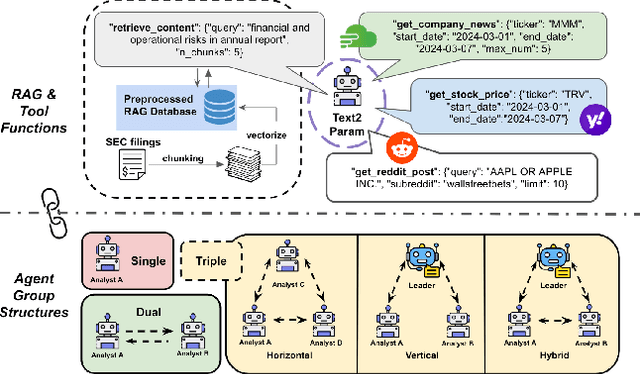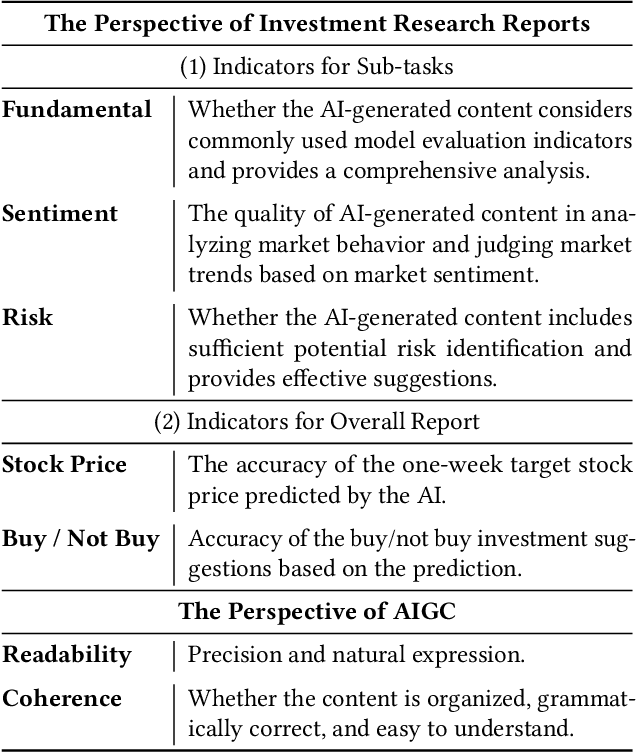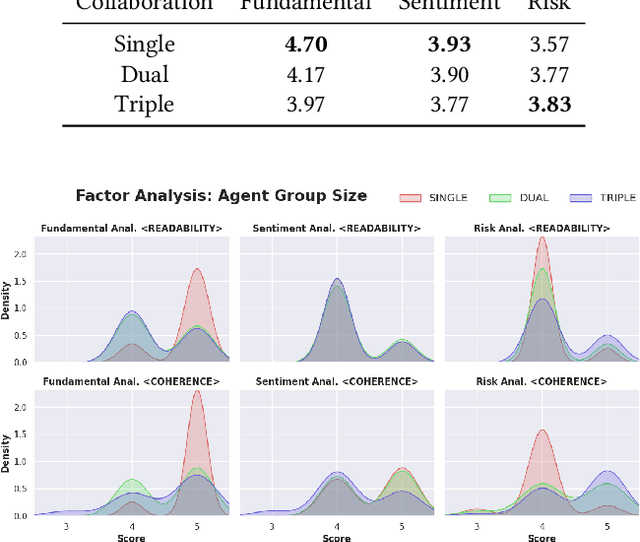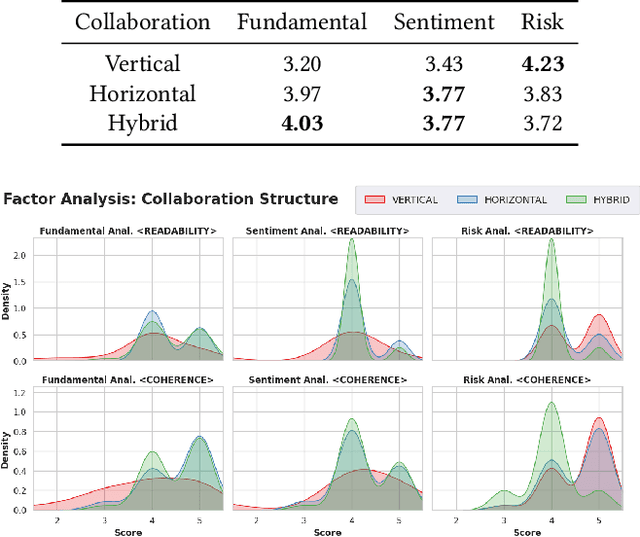Shangkun Che
Enhancing Investment Analysis: Optimizing AI-Agent Collaboration in Financial Research
Nov 07, 2024



Abstract:In recent years, the application of generative artificial intelligence (GenAI) in financial analysis and investment decision-making has gained significant attention. However, most existing approaches rely on single-agent systems, which fail to fully utilize the collaborative potential of multiple AI agents. In this paper, we propose a novel multi-agent collaboration system designed to enhance decision-making in financial investment research. The system incorporates agent groups with both configurable group sizes and collaboration structures to leverage the strengths of each agent group type. By utilizing a sub-optimal combination strategy, the system dynamically adapts to varying market conditions and investment scenarios, optimizing performance across different tasks. We focus on three sub-tasks: fundamentals, market sentiment, and risk analysis, by analyzing the 2023 SEC 10-K forms of 30 companies listed on the Dow Jones Index. Our findings reveal significant performance variations based on the configurations of AI agents for different tasks. The results demonstrate that our multi-agent collaboration system outperforms traditional single-agent models, offering improved accuracy, efficiency, and adaptability in complex financial environments. This study highlights the potential of multi-agent systems in transforming financial analysis and investment decision-making by integrating diverse analytical perspectives.
Bias of AI-Generated Content: An Examination of News Produced by Large Language Models
Sep 19, 2023Abstract:Large language models (LLMs) have the potential to transform our lives and work through the content they generate, known as AI-Generated Content (AIGC). To harness this transformation, we need to understand the limitations of LLMs. Here, we investigate the bias of AIGC produced by seven representative LLMs, including ChatGPT and LLaMA. We collect news articles from The New York Times and Reuters, both known for their dedication to provide unbiased news. We then apply each examined LLM to generate news content with headlines of these news articles as prompts, and evaluate the gender and racial biases of the AIGC produced by the LLM by comparing the AIGC and the original news articles. We further analyze the gender bias of each LLM under biased prompts by adding gender-biased messages to prompts constructed from these news headlines. Our study reveals that the AIGC produced by each examined LLM demonstrates substantial gender and racial biases. Moreover, the AIGC generated by each LLM exhibits notable discrimination against females and individuals of the Black race. Among the LLMs, the AIGC generated by ChatGPT demonstrates the lowest level of bias, and ChatGPT is the sole model capable of declining content generation when provided with biased prompts.
 Add to Chrome
Add to Chrome Add to Firefox
Add to Firefox Add to Edge
Add to Edge